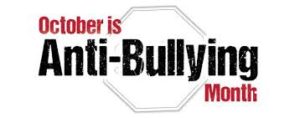
I’ve always had a duck personality. Calm above water, feet going crazy below. – K. Flay
A man in the supermarket was pushing a cart which contained, among other things, a screaming baby. As the man proceeded along the aisles, he kept repeating softly, “Keep calm, George. Don’t get excited, George. Don’t get excited, George. Don’t yell, George.”
A lady watching with admiration said to the man, “You are certainly to be commended for your patience in trying to quiet little George.”
“Lady,” he declared, “I’m George.”
As a leader, I’m sure you’ve had your moments when you felt like the man in the supermarket pushing the cart.
As a leader, you might be able to identify with Tom Welling who said, “I have so much chaos in my life, it’s become normal.” Can you relate?
Being a leader does not exempt you from chaos, stress, pressures, and the such. If anything, it might add to it.
But as a leader, your style and approach at such times are important. Others are looking to you to see how you react which in many ways determines how they will react.
Your leadership when times are tough will either cause people to lose hope and succumb to despair or it will instill hope and confidence. Click To Tweet In these times, your people need an example of the calming effect that your leadership can have. Here are four ways that happen.
Calm leaders see the big picture
Calm leaders are not rocked by every disruption that comes along. Short-sightedness tends to fuel the insecurities in people. A calm leader can exude confidence because they see the big picture and it’s with that understanding they can lead with a steady hand.
Calm leaders understand timing
One of the hardest things to learn as a leader is timing. We are people of action. Waiting is not necessarily a finer quality. But calm leaders have an intuition for timing. They know when it’s time to wait and when it’s time to act. The calming effect of timing within your organization and with your people can make a world of difference. Calm leaders can help avert a multitude of troubles just by understanding how timing impacts most every decision they make. Click To Tweet
Calm leaders challenge norms
Calm leaders tend to challenge norms and stretch others to grow in ways they are not often comfortable with. Call it what you will – human nature, gut reactions, etc., but many people react to things happening to them or around them in ways that only make matters worse. But a calm leader is processing. A calm leader brings peace to the storm, level-headed thinking, and challenges the norms that define the way things have always been done.
Calm leaders bring stability
Calm leaders bring a level of maturity and stability that is often lacking during turbulent times. Calm leaders know that their actions, attitudes, reactions, and thinking go a long way in determining successful outcomes.
Calm leaders are not passive leaders, nor are they passionless. Calm leaders are simply those who know how to harness the power of their intuition, experience, maturity, and wisdom to be a more effective leader. Click To Tweet
Strive to be a leader who, when everything around them seems to be in chaos, brings a calming presence to the situation. We could sure use more calm leaders.
©2019 Doug Dickerson








 Liz Stincelli is the Founder of Stincelli Advisors where she focuses on helping organizations engage employees and improve organizational culture. She holds a Doctor of Management degree with an emphasis on organizational leadership. Learn more about Liz by visiting her website: www.stincelliadvisors.com
Liz Stincelli is the Founder of Stincelli Advisors where she focuses on helping organizations engage employees and improve organizational culture. She holds a Doctor of Management degree with an emphasis on organizational leadership. Learn more about Liz by visiting her website: www.stincelliadvisors.com
